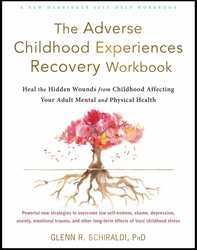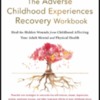Glenn R. Schiraldi, Ph.D. Psychology Today blog post, November 8, 2023
This post is part of a series on adverse childhood experiences. Read the other parts here.
Perhaps you’ve been told, “You worry too much. Just relax.” Perhaps you think, “I wish it were that easy. I’ve worried all my life.” Worry is a prominent feature of anxiety disorders, the most prevalent of the mental disorders. Worry is often rooted in adverse childhood experiences (ACEs).
What Is Worry?
Worry is a seemingly relentless chain of troubling thoughts, sometimes accompanied by troubling images, that occur as we try to cope with issues that are uncertain and fearful.
The worry chain might start with a fear that leads to “What ifs.” For example, a generalized feeling of being unsafe or damaged might lead to: “What if I fail? What if I’m judged? What if my money runs out? What if my life has no purpose? What if the worst happens?” Such thoughts typically distract us from actually resolving the original fear that’s driving the worries, so the worries continue and keep us up at night and anxious.
Worry correlates with low self-esteem and low confidence at problem solving. Worriers tend to have high standards to validate their worth, while treating themselves harshly for failing to meet these standards.
Replacing excessive worry with solution-focused concern usually results in improved mood and performance, less fatigue, less anxiety, better health, and yes, better sleep!
Worry’s Link to Childhood Adversity
ACEs can overstimulate the nervous system and wire the brain to remain on high alert. The hyperaroused brain becomes over-reactive to present fears and stressors, which trigger fearful childhood memories. For example, attachment disruptions in the early years of life can imprint feelings of shame—the fearful felt sense of being inadequate, worthless, not good enough, and so on. Imprinted shame can then be triggered by present situations, such as criticism or fear of failing.
Worrisome thought patterns in the brain can be imprinted in childhood. These patterns can be exacerbated by genetic predispositions, dysfunctional coping patterns seen in the home, disordered breathing, a wide range of medical illnesses, substance use (including alcohol, caffeine, and even tranquilizers), discontinuation of various drugs (such as antianxiety or antidepressant medications), lack of meaning and purpose, and unhealthy lifestyle practices (such as irregular sleep hours, lack of exercise, and poor nutrition).
What Keeps Us Worried and Anxious?
Avoidance does. It is understandable that we’d wish to avoid uncomfortable feelings—like fear and a sense of inadequacy—and the hidden wounds from childhood that maintain these feelings. Avoidance brings immediate, temporary relief, but at quite a cost. First, avoided fears remain the same, unchanged and likely to intrude in our lives (including at night when we try to sleep). We might even start to fear going to bed, which can lead to insomnia and sleep deprivation (both of which worsen worry). Second, we don’t learn that facing our fears might not be as difficult as we suppose, and that we can learn to manage our fears and worries.
The Principles of Managing Worries
These are the principles of effective worry management:
- Face and settle the fears and the early emotional wounds that feed those fears. In so doing you realize that the past need not rule your present life. Many self-managed strategies for healing hidden wounds from ACEs and the fears they trigger can be tried (Schiraldi, 2021). Helpful strategies can also be guided by a skilled mental health professional specializing in resolving childhood trauma.
- Put worries in perspective. Many of the outcomes we worry about are inconvenient and uncomfortable, But not catastrophes. Should an actual catastrophe arise, handle it as well as you can, which is all that can be asked of anyone.
- Worry efficiently during pre-planned worry periods. One problem with worry is that worrisome thoughts tend to take on a life of their own, leaking into all aspects of our lives. Confining worries to limited worry periods gives worries the attention they need without taking over most of your day and night.
- Take action to address problems that lead to worries, rather than passively letting worries rule your life.
- During most of the day, consciously choose to focus on pleasant thoughts, activities, and aspects of your surroundings. This is possible because you know that your worries will receive needed attention during your pre-planned worry periods.
Fortunately, many strategies and skills apply these foundational principles, leading to greater enjoyment and better functioning in life. We’ll explore these strategies and skills in future posts.
Reference
Schiraldi, G. R. (2021). The Adverse Childhood Experiences Recovery Workbook: Heal the Hidden Wounds from Childhood Affecting Your Adult Mental and Physical Health. Oakland, CA: New Harbinger Publications.
About the Author
Glenn R. Schiraldi, PhD, has served on the stress management faculties at The Pentagon, the International Critical Incident Stress Foundation, and the University of Maryland, where he received the Outstanding Teacher Award in addition to other teaching/service awards. His fourteen books on stress-related topics have been translated into seventeen languages, and include The Adverse Childhood Experiences Recovery Workbook, The Self-Esteem Workbook. The Resilience Workbook, and The Post-Traumatic Stress Disorder Sourcebook. The founder of Resilience Training International (www.ResilienceFirst.com), he has trained laypersons, emergency responders, and clinicians around the world on the diverse aspects of stress, trauma, and resilience.
Title image photo credit: AndreyPopov/istockphoto



Comments (0)